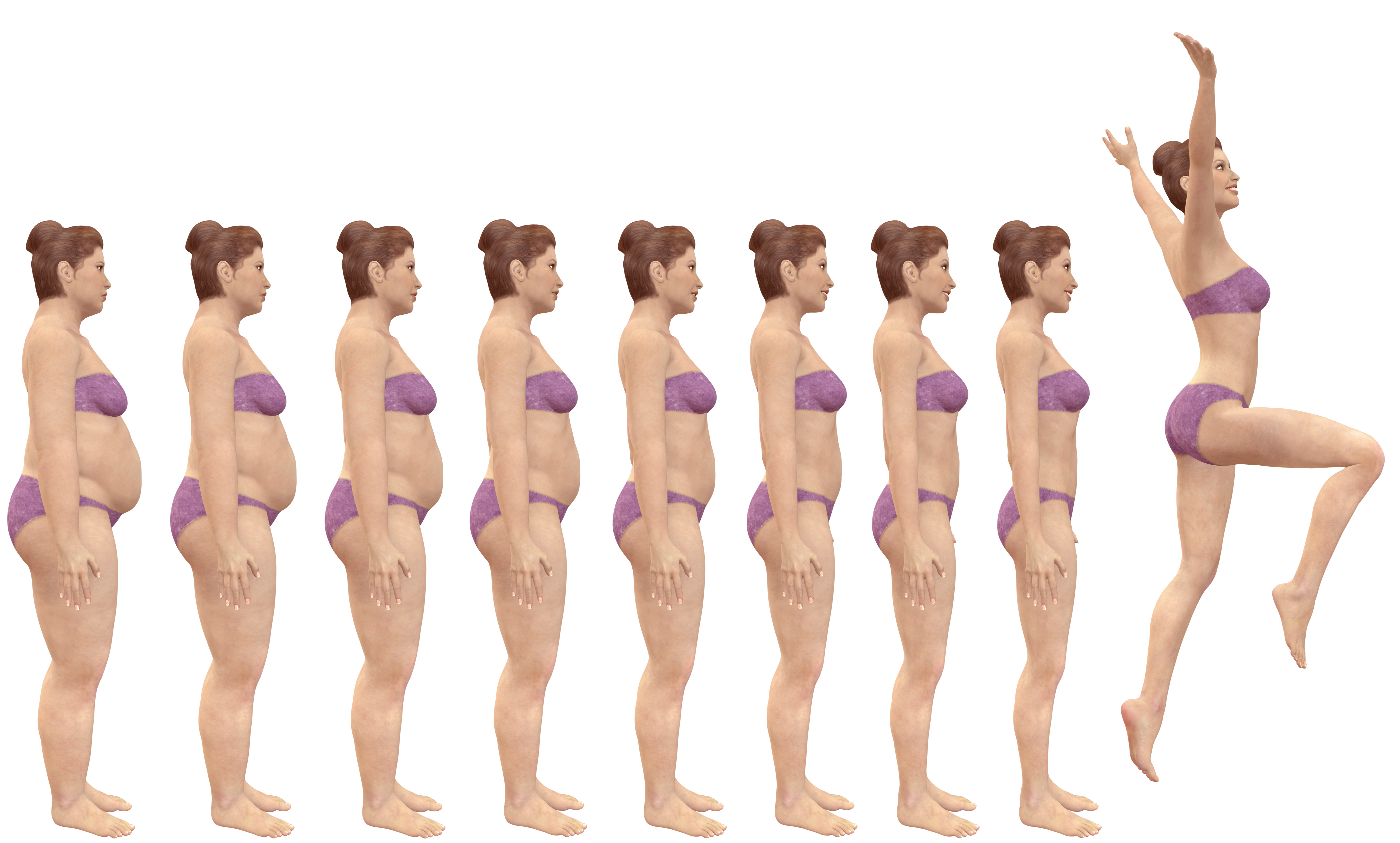COST OF OBESITY
The financial impact of obesity is far from negligible. According to estimates, 2 to 7% of the total health care costs of the western world are linked to obesity.
The problem is therefore as profound as it is far ranging.
WHAT IS THE COST OF OBESITY AND OVERWEIGHT?
International studies on the economic cost of obesity have shown that it represents from 2 to 7% of total health care costs; the percentage varies according to the method of analysis.
In England, the annual cost of obesity is estimated at 500 million pounds for social security alone, and the impact on the economy is estimated to be about 2 billion pounds. The human cost of obesity is estimated at 18 million days of sick leave; 30.000 years of professional life lost; and a shorter life span.
The social cost of obesity in Canada is an amazing 6 billion out of the health budget.
In the United Sates, obesity costs each year one hundred billion dollars, an amount that would easily cover the health care of millions of Americans without coverage, according to the president of NAASO (North American Association for the Study of Obesity), during their annual congress in Charleston.
“In the United Sates, the direct medical cost of obesity (treatment, medical visits, operations) is 51 billion dollars per year, to which can be added 49 billion in indirect costs linked to loss of productivity.”


FIRST NON-CONTAGIOUS EPIDEMIC
Obesity has not stopped progressing. A recent national ObEpi study in France by the Roche institute and Sofres, in collaboration with the Inserm and the Hotel Dieu de Paris, revealed that obesity and overweight have continued to progress in France since 1997. The proportion of overweight or obese in the population has increased from 36.7% to 41.6% between 1997 and 2003, which represents a 13% increase. At the same time, the French have gained on average 1.7 kg, and severe obesity (also called morbid obesity) has doubled.
More and more children are affected (19% in France). Past 65 years old, obesity is about equally distributed between men and women (about 15%). France numbers more than 5.3 million obese adults and 14.4 million overweight people (according to an Insee study in 2002 on people aged 15 and older). Obesity is a public health issue and affects all ages and all professions.
In France, where 16% of the 6-15 year olds have some overweight (compared to 5% in 1980), including 3.8% of obese, obesity is considered to be “epidemic” by the National Health and Research Institute (Inserm). After a tense struggle and under the pressure of agribusiness, some measures have been obtained and inscribed in articles 29 and 30 of the law of August 9th, 2004, on public health policy, and should soon be applied.
The AOA (American Obesity Association), the Inserm and INS have all raised a cry of alarm against the stupefying increase of obesity in the world, particularly among children. Today, in France, 1 out of 10 children is obese at the age of 10, double what it was in 1980. Among children from 6 to 12, the rate is 10 to 12%. It is estimated that if obesity appears before puberty, its rate of persistence in adults will be 20 to 50%, and from 50 to 70% if obesity appears after puberty.
But obesity is not a problem that only affects the United States and France, it affects all developed countries and is now expanding like a plague in all developing countries, with medium or low incomes, and where the “economic transition” is generating a “nutrition transition”, which is a transformation of eating habits and behaviors, a reduction of physical activity, and a catastrophic quality of foods (agribusiness and industrial junk food). Too many fats, too many sugars, too many calories, and not enough exercise.
The WHO (World Health Organization) considers obesity to be an epidemic. In the world, 300 million adults have overweight and, in most cases, they suffer from weight-related pathologies. A third of overweight people live in developing countries.
November 11th, 2004 | Geneva. It is estimated that, in the world, obesity or overweight affect 22 million children of ages 5 or less, of which 17 million are in developing countries. As the WHO and the IDF (International Diabetes Federation) indicate, each one of these children has an increased risk of developing Type 2 Diabetes (also called adult diabetes or maturity onset diabetes).
“The struggle against child obesity is a very effective way of preventing diabetes in the future”, explains Dr Catherine le Galès-Camus, assistant manager at the WHO on non-contagious diseases and mental health, a few days before the World Diabetes Day on November 4th, 2004.
It is estimated that , in the world, 10% of children from 5 to 17 years old have overweight or are obese, and the situation is getting worse. In the United Sates for example, the rate of obesity and overweight in children and adolescents from 6 to 18 years has increased from 15% in the 70´s to more than 25% in the 90´s.
Such increases are not limited to developed countries. In China, a study determined that the frequency of overweight and obesity among children of school-going ages in urban areas has increased from 8% in 1991 to 12% six years later. In Brazil, the proportion of overweight of obese children of ages 6 to 18 has tripled: 4% in the 70´s to 13% in 1997.
OBESITY IN THE WORLD
COUNTRY |
Angleterre (1995) |
Allemagne (1995) |
France (1997) |
USA (1995) |
Japon (1993) |
Suisse (1994-1995) |
|---|---|---|---|---|---|---|
| MEN (BMI > 30) | M 15 % | M 17 % | M 8 % | M 19,7 % | M 1,7 % | M 6,1 % (33 % BMI 25-29) |
| WOMEN (BMI > 30) | W 16 % | W 19 % | W 9 % | W 24.7 % | W 2.7 % | W 4.7 % (17 % BMI 25-29) |
Obesity has increased from 10 to 40% in all European countries in the last ten to fifteen years. It should be noted that this increase is more obvious among children and adolescents. 20% of children are obese at the age of 1, and 60% of obese adolescents will become obese adults (the risk is further increased if one of the parents is obese). The cost of obesity in France represented 4% of health expenses in 1995 (4% in the Netherlands, 6% in the USA) and has increased constantly ever since.
Some numbers: In China, 12% of women and 10% of men are obese; in Malaysia, 3 out of 10 men are obese; in Mexico, 23% of the population is obese and 58% overweight; in Kuwait, 32% of men and 40% of women are obese; In Saudi Arabia, 16% of men and 24% of women.
Obesity affects 1.1 billion people in the world.
NUTRITION TRANSITION AND OBESITY
Obesity in the developing world is the result of a series of changes linked to eating habits, exercise, health, and nutrition, called “nutrition transition”. As poor nations become wealthier, they gain access to certain benefits but also to many problems of the developed countries, among them obesity.
THE PRICE OF UNHEALTHY EATING
People suffering from underweight or overweight all have high instances of diseases or infirmities, a reduced life span and lesser productivity. Obesity increases the risks of chronic diseases such as diabetes, high blood pressure, cardiovascular diseases, diseases of the gallbladder and some forms of cancer.
The developing world risks getting the lion´s share of these new diseases. For example, the number of people suffering from weight-related diabetes should double and reach 300 million between 1998 and 2025 – three quarters of which would be in the developing world. For countries whose economic and social resources are already strained, the result could be catastrophic.
Socially, it has been proven that overweight people suffer from discrimination during hiring. Many employers hesitate to give responsibilities to someone – particularly a woman – who “doesn´t have enough willpower to keep a normal waistline” and “lets herself grow fat”. And sociologists note that marriage works as a marshalling yard that sends obese women to the bottom of the social scale because rich men don´t want them.
An other inequality: the lower classes are more affected by obesity because eating well (healthily) is more expensive.
From a sanitary point of view, obesity is about to become, according to the World Heart Federation, the principal risk factor of cardiovascular and related diseases. In France already, 55.000 deaths each year are related to overweight or its consequences.
PATHOLOGY OF OBESITY
Obesity has long posed problems to the medical world, in terms of coverage and therapeutic care. Its genetic, behavioral and socio-cultural components make healthcare management of overweight difficult.
The WHOs observation of increasing obesity these past years in the general population, and the progress made in understanding its pathophysiological mechanisms, lead to the conclusion that obesity is a disease and that it is a public health issue.
WHAT IS OBESITY ?
Obesity is defined as an excess of fat that leads to health drawbacks. It is associated with increased mortality and morbidity, in particular of a cardiorespiratory or metabolic nature (diabetes, hyperlipidemia).
To these somatic consequences, one can add the psychological and social factors that can influence quality of life.
Obesity is a heterogeneous clinical entity that results from the interaction of biological, psychological, and behavioral determiners, as well as environmental factors. In recent years, the knowledge on the regulation of energy reserves has progressed while, in clinics, the therapeutic objectives have been better defined.
Strictly speaking, the diagnostic of obesity should be based on a measure of the fat mass, such as the BMI (body mass index). The BMI is the ratio of weight (kg) divided by the height (m), squared, of the subject. This number gives an approximate but sufficient evaluation of the fat mass. Devised according to the level of risk associated with that BMI, a classification of obesities has been established by the World Health Organization (WHO). A BMI under 18.5 kg/m2 characterizes thinness; between 25 and 30 kg/m2, simple overweight; a BMI superior to 20 kg/m2 is considered to have excessive fat mass, because the individual presents seriously higher risks of morbidity and mortality.
Moderate obesity is defined by a BMI between 30 and 35 kg/m2, whereas obesities higher than 35 kg/m2 are severe up to 40 kg/m2, and recognized as “morbid” when higher than this value.
These definitions do not take into account age, sex, ethnicity, age of onset of condition, duration of condition, or the distribution of fat tissue; all these are elements that can increase the risks linked to overweight. At an individual level, and without waiting to reach the 30 kg/m2 threshold, overweight can be considered a medical problem if it increases the risks of contracting an associated disease, such as diabetes.
On the contrary, in some individuals whose BMI is higher than 30 kg/m2, the excess of weight can be perfectly tolerated. If we add to that that everyone has his or her own perception of “desirable weight”, influenced by sociocultural stereotypes, and that this will determine his or her possible desire to change, we can understand that a purely statistical definition of obesity has its limits when confronted to certain individual situations. It is important in each case to synthesize by taking into account not only epidemiological data, but also those that are specific to each subject, whether objective (state of health, age, fat tissue distribution, family antecedents, blood pressure, etc.) or subjective (perception of state of health, self image, etc.).
EPIDEMIOLOGY
The prevalence of obesity varies by country, region, socio-economic category and age category (the clearest increase in weight affects the 35-44 and 45-54 year old categories). In North America, it is twice as prevalent as in Europe. Obesity cannot be considered a rich country´s problem, however. Developing countries and so-called “emerging countries” have seen a spectacular increase in recent years.
In France, obesity affects about 8% of adults; it is close to the levels in Sweden and the Netherlands, and by far inferior to those of Great Britain, Central Europe, and the United States (25% to 30%).
The increase of obesity in France during the last decade of the 20th century seems more limited than in Anglo-Saxon countries. However, its increase among children gives reason to worry and is a probable cause for an increase in adult obesity in the future. There are regional differences: obesity is twice as frequent in the north of France than it is in the south. In industrialized nations, obesity is far more common among the poorer classes.
CAUSES
Obesity is the manifestation of a dysfunction in the energy balance, which leads to an increase in the stocking of energy in the form of fat in adipose tissue. This imbalance results in the interaction of factors of genetic predisposition with behavioral and environmental factors.
ROLE OF THE ENVIRONMENT
Whatever the level of genetic factors, it is important to note that the determining factors are environmental and behavioral. The frequency of massive obesity has doubled in the last fifteen years in Great Britain, during which the hereditary characteristics (the genome) of the British people did not have time to change. Western lifestyles (in industrialized countries) facilitate the emergence of obesity.
The increase in the caloric density of foods, the reduction of consumption of complex carbohydrates (fibres, starch), the disintegration of eating rhythms, the diversity and the availability of foods are so many factors that can defeat the physiological regulatory mechanisms of the energy balance. The reduction of energy expenditure (exertion) linked to means of transportation, heating, decrease of physical labor, changes in the means of acquiring food, changes in leisure (more sedentary), all this plays a role in the development of many cases of obesity. Finally, one must take into account psychological factors that influence eating behaviors. For example, anxiety and depression can cause impulsive eating that increase the daily caloric intake. One must finally also mention the influence of the family environment (eating habits and conditioning), the social environment, and the economic environment. Everything in a consumer society contributes to favor obesity in genetically predisposed individuals.
EVOLUTION
Obesity evolves in different ways: a build-up phase, called “dynamic” phase, during which the individual goes from a “normal” weight to a weight excess; a static phase, in which the individual maintains his weight; phases of weight loss linked to therapeutic interventions; and phases of regaining lost weight (successive failed diets).
The build-up phase indicates a positive energy balance, whatever its origin (increase in intake and/or decrease in exertion). The static phase comes from a new balance: weight is stable, energy intake and expenditures balance out. During periods of weight loss, the body adapts by decreasing its energy expenditure in order to avoid undernourishment: every diet therefore encounters a limit of “effectiveness” which manifests through a new stability in weight. This adaptation mechanism kicks in at different levels of weight loss and food restriction from one individual to the next. The consequence is that weight loss capacity also varies from one individual to the next, particularly in the case of age. This must be taken into account when establishing therapeutic goals: a subject that is predisposed to overweight must have realistic weight loss goals. These goals can and should be determined according to overweight history, evolution of the weight gain process, food intake, and family antecedents.
Another particularity of obesity is its tendency to spontaneous aggravation: it is a chronic situation that relapses as soon as the treatment is suspended. Excessively restrictive diets, followed repeatedly, can facilitate the development of “resistance” to weight loss, which makes the problem worse and makes further successive attempts less and less effective (also called the yo-yo effect or cycle dieting).
COMPLICATIONS DUE TO OBESITY
The major complications linked to obesity are diabetes, insulin resistance, hyperlipidemia, high blood pressure, and sleep apnea are all diseases for which overweight increases the risk. More than 80% of non insulin-dependant diabetics are obese, and 30% of subjects with serious obesity are diabetic. Abdominal obesity, also called Android obesity (characterized by an increase in fat in the abdominal cavity) facilitates the development of metabolic and cardio-vascular diseases.
MUTATE OR REACT
In the beginning, there was the earth and men and what men needed to feed themselves; it was what nature had to offer them: its fruits, its vegetables, its seeds, meat and fish. Thus from generation to generation, humanity could live and survive. But today times have changed, and it is what we eat and how we eat that kills us.
New technologies and tools, manufacturing processes, and especially economic interests of food industry lobbies – humanity is the victim of all of them. Overconsumption, overproduction, GMO´s, by-products of by-products and more by-products, chemical meal substitutes, both colorless and tasteless, lifeless products, requiring in their conception new cooking utensils, disintegrating the last living molecule, but so fast and practical.
It is obvious that at this rate, everything will happen very quickly. Conversely and to gain the antidote market in the process, the food-processing industry and pharmaceutical industry have morphed into the slimming industry, and invaded us with false miracle cures; slimming creams that destroy all at once cellulite, fat, and stretch marks, a true miracle; or desiccated and tasteless soups, that we eat at every meal for 7 days, to finally succumb to the first chocolate pastry we find, so huge is our frustration.
The slimming industry is at the foundation of this new economic slavery that has turned human flesh into a source of profit. And the devastating forecasts are most alarming. Surreal figure of 100% obesity in the USA, and in 30 years, the rest of the world. This is the fate of humanity, the fate of our children. We are on the eve of an irrevocable mutation – a planet of the obese, where most individuals will probably not pass the age of 35.
Worse than all epidemics, worse than all plagues in the history of humanity, worse than the greatest nuclear attack, and yet we are going this way serenely, without protest or reaction. This is about our fate, our lives, and those of our children. If today, you were told to change direction, because if not, in 20 years, you would all die of cyanide poisoning, would this wake your conscience?
Time is running out. It is necessary to change gears and slow down, to take control, to become vigilant, to mobilize, to get ourselves involved, together, in order to avoid making the greatest collective suicide of all times.









